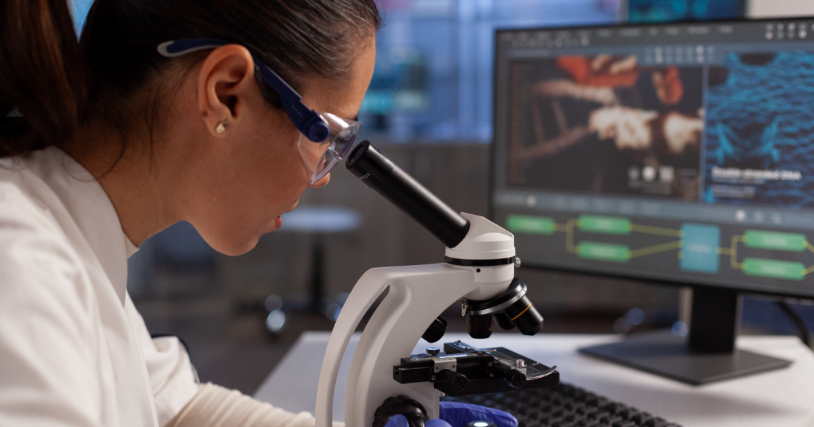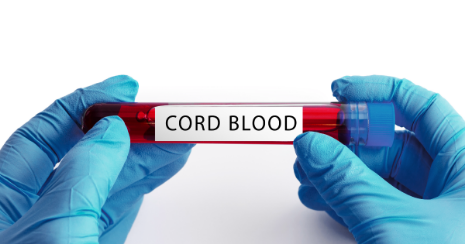What if there was a treatment that could help you heal from injuries faster, improve your cognitive function, and even slow down the aging process? Believe it or not, this treatment exists – it’s called stem cell therapy. Stem cells are undifferentiated cells that have the ability to develop into any type of specialized cell in the body. This makes them incredibly powerful when it comes to treating medical conditions. Today, we will discuss the incredible power of stem cells and how they can be used to treat a variety of medical conditions. Stem cells are the “master” cells of your body. They can turn into any type of specialized cell, such as a muscle, nerve, or bone cell. These special properties make them valuable tools for regenerative medicine and tissue engineering. Stem cell therapy is a highly advanced integrative medicine treatment that uses human stem cells to help repair damaged tissue or organs.
Stem Cell Basics
What are stem cells? Stem cells are the foundation for all types of tissue in the body. They originate in various areas of the body and at different phases throughout life. Stem cells can be found in all body tissues, helping to replace and grow healthy cells from that tissue type.

Stem Cell Therapy: What Is It?
Since the discovery of stem cells in 1961, researchers have been looking for ways to harness their potential as a way to treat many different diseases and conditions. Stem cell research has led to breakthroughs in integrative medicine and tissue engineering, where stem cells are used to repair damaged tissues or organs. Stem cell therapy is a type of treatment that uses human stem cells to help repair damaged tissue or organs. It’s also referred to as regenerative medicine because it repairs the body by encouraging the natural regeneration of new tissue and healthy function. Stem cell therapy is currently being used to treat a number of medical conditions, including chronic pain syndrome (CPS), degenerative disc disease (DDD), osteoarthritis (OA), rheumatoid arthritis (RA) and other forms of inflammatory joint diseases, peripheral neuropathy, cardiac conditions, neurological disorders such as multiple sclerosis or Parkinson’s disease.
Benefits of Stem Cell Therapy

Stem cell therapy can help treat a number of medical conditions, including chronic pain syndrome (CPS), degenerative disc disease (DDD), osteoarthritis (OA), rheumatoid arthritis (RA) and other forms of inflammatory joint diseases, peripheral neuropathy, cardiac conditions, neurological disorders such as multiple sclerosis or Parkinson’s disease.
Stem cell therapy can also be used to help repair injuries caused by sports and physical activity. Because stem cells have the ability to differentiate into any tissue type, they can help repair damages that occur in muscles, bones, and other parts of the body. By injecting these specialized cells into joints and tendons, stem cell therapy can help reduce inflammation and promote healing.
Stem cells have the ability to divide and renew themselves for long periods, delivering long-lasting, effective relief for pain and chronic conditions. Unlike medication, which typically provides only temporary relief and may have unwanted side effects, stem cell therapy is a natural treatment that helps your body to heal itself. Stem cell therapy has also been shown to improve cognitive function in patients with dementia or Alzheimer’s disease. This is because stem cells have been found to produce neurotrophic factors like BDNF (Brain-Derived Neurotrophic Factor), which are essential for the growth and survival of nerve cells.
Lastly, stem cell therapy has been shown to slow down the aging process by reducing inflammation and oxidative stress in the body. This is because stem cells help promote regeneration and turnover of healthy cells, which helps reduce the amount of damage that occurs over time.
There are a number of benefits to stem cell therapy, which is why it’s becoming an increasingly popular treatment option. Some of the most notable benefits include:
- Improved healing and regeneration of tissues
- Reduced inflammation and oxidative stress
- Improved cognitive function
- Slowed down the aging process
Where Do Stem Cells Come From?

Embryonic Stem Cells
Embryonic stem cells are derived from the early stages of human development, specifically, the inner cell mass that forms during the four-to-five day period after fertilization. They have been used to treat many diseases and injuries because they can differentiate into any type of cell.
Adult Stem Cells

Adult stem cells are undifferentiated cells that can be found in adult tissues. They can develop into specialized cells to maintain, repair, and regenerate tissue. Adult stem cells have a limited ability to replicate, or differentiate because they only work within the specific type of tissue from which they originate – for example, bone marrow stem cells only become blood cells and do not transform into other types of tissue.
Induced Pluripotent Stem Cells (iPSCs)
Induced pluripotent stem cells are adult stem cells that have been genetically reprogrammed back to a primordial state, allowing them to behave like embryonic stem cells without the use of embryos. These cells can differentiate into any type of cell, however they are not considered as powerful as embryonic stem cells because they can become cancerous or form tumors after transplantation.
Mesenchymal Stem Cells (MSC)

Mesenchymal stem cells (MSC) are produced from the connective tissue that surrounds other tissues and organs. They’re obtained from bone marrow, fat, and newborn umbilical cord blood. MSC cells are multipotent in the sense that they may differentiate into a few distinct tissue types, including bone, cartilage, tendons, ligaments, muscle, and fat.
The Source of Stem Cells for Advanced Medical Treatments
Mesenchymal stem cells (MSC) are produced from the connective tissue that surrounds other tissues and organs. They’re obtained from bone marrow, fat, and newborn umbilical cord blood. MSC cells are multipotent in the sense that they may differentiate into a few distinct tissue types, including bone, cartilage, tendons, ligaments, muscle, and fat.
Bone Marrow Stem Cells
Bone marrow-derived mesenchymal stem cells (BM-MSC) are the most widely utilized mesenchymal stem cells for scientific and clinical research. However, BM-MSC count drops significantly with age, as well as their potential to differentiate into new tissues. Because of the high costs, risks, and discomfort associated with BM-MSC therapy, it may not be an ideal option for regenerative treatments.
Stem Cells from Fat Tissue
Stem cells from fat tissues, or adipose-derived mesenchymal stem cells, are a more readily accessible type of stem cell that has been shown in vitro to be as effective as any of the other types. However, there may be concerns about safety. Adipose tissue is where toxins are stored, and these chemicals might have an impact on the stem cell’s function.
Umbilical Cord Stem Cells

Mesenchymal stem cells from the umbilical cord and placenta are easier to obtain. They’re also safer because they don’t contain toxins or require surgery to get, and there are no recorded negative effects. This tissue is collected from mothers who have given their explicit consent to donate it for medical use.
Umbilical cord-derived mesenchymal stem cells have been found to be as effective as or superior to other types of mesenchymal stem cells in numerous studies.
Mesenchymal stem cells do not actually become a component of your body’s functional tissue after they enter it. Instead, they discharge nanoparticles that encourage your own stem cells to function more effectively and faster, much as they would have when they were younger. Because MSCs that are more alive and younger replicate faster, they can work to restore your body by combating cell death, reducing inflammation, and generating specialized cells such as cartilage, muscle, or bone.
Stem cell treatments are a dynamic, progressive field. It’s important to seek out integrative medical practices that keep pace with the latest developments in regenerative medicine and use cutting-edge techniques for stem cell therapy treatments.


